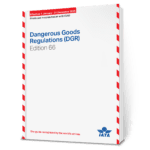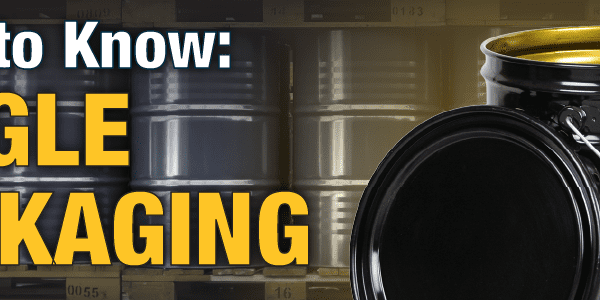
Update on Shipping Extracts by Air
If you’ve been following our Help Center, you may have noticed an article on the evolving changes for the description of flammable extracts for flavouring or aromatic purposes. There’s some news on this topic out with the recent 66th Edition of the IATA Dangerous Goods Regulations.
What is the Issue with Flammable Extracts?
Although flavouring and aromatic extracts were originally given separate shipping names, the United Nations Recommendations on the Transport of Dangerous Goods has decided to combine them into one name, UN1197, EXTRACTS, LIQUID. This is probably a sensible approach – the intended use of the extract has little bearing on its safety during transportation. However, this does mean that organizations who have been using either UN1169, EXTRACTS, AROMATIC, LIQUID or UN1197, EXTRACTS, FLAVOURING, LIQUID will have to eventually switch to the simplified name.
The IATA DGR has, as expected, adopted this update for 2025, but with a provision to help those who are still in the midst of making the change.
Implementation of the IATA Changes for Extracts
As of January 1, 2025, the DGR will eliminate the entries for UN1169, EXTRACTS, AROMATIC, LIQUID and UN1197, EXTRACTS, FLAVOURING, LIQUID, replacing them with the simpler UN1197, EXTRACTS, LIQUID. However, there is a minor extension given for those who still have stock with the old shipping description. In DGR paragraph 8.1.6.9.1, IATA states that:
“Until 31 March 2025, shippers may continue to use UN 1169, Extracts, aromatic, liquid and UN 1197, Extracts, flavouring, liquid as shown in the 63rd Edition of these Regulations. In that instance, the Shipper’s Declaration must indicate the UN number, proper shipping name and packing instruction number in effect in the 63rd Edition of these Regulations. The marks applied to packages, and overpacks, when applicable, must be consistent with the information shown on the Shipper’s Declaration.”
It is expected that the International Maritime Dangerous Goods Code (IMDG) will also drop the two obsolete descriptions, although it comes with a built-in one-year transition period, so may not include the extension to March 31.
Since the U.S. “Hazardous Materials Regulations” of Title 49, Code of Federal Regulations have already adopted this change in its last harmonization amendment, IATA’s move will simplify operations for U.S. shippers. Unfortunately, the Canadian “Transportation of Dangerous Goods Regulations” have not yet been harmonized with the latest UN Recommendations. However, a workaround is given in TDGR 2.2(4), which says:
“A consignor may use the appropriate classification in the ICAO Technical Instructions, the IMDG Code or the UN Recommendations to transport dangerous goods within Canada by a road vehicle, a railway vehicle or a vessel on a domestic voyage if these Regulations or the document from which the classification is taken does not forbid their transport.“
So, in the interest of simplicity, shippers will be able to use the new description of UN1197, EXTRACTS, LIQUID for shipments by air, ocean and ground within North America.
Questions?
Have questions or issues with the new regulatory requirements for the next UN biennium? Our team of experts is just a call away for our customers at 855.734.5469 or send us an email, we’re happy to help. We can advise you how to comply with current and upcoming regulations.
Stay up to date and sign up for our newsletter!
We have all the products, services and training you need to ensure your staff is properly trained and informed.
 Proper Shipping Proper ShippingName Labels |
Sources:
United Nations, UN Model Regulations Rev. 23 (2023), https://unece.org/transport/dangerous-goods/un-model-regulations-rev-23
Hazmat University, “49 CFR Shipments of Extracts, Liquid (For Flavoring or Aroma),” https://www.hazmatuniversity.com/news/49-cfr-shipments-of-extracts-liquid-for-flavoring-or-aroma/
Federal Register, Hazardous Materials: Harmonization With International Standards, RIN 2137–AF57, https://www.govinfo.gov/content/pkg/FR-2024-04-10/pdf/2024-06956.pdf








 ICC USA
ICC USA ICC Canada
ICC Canada